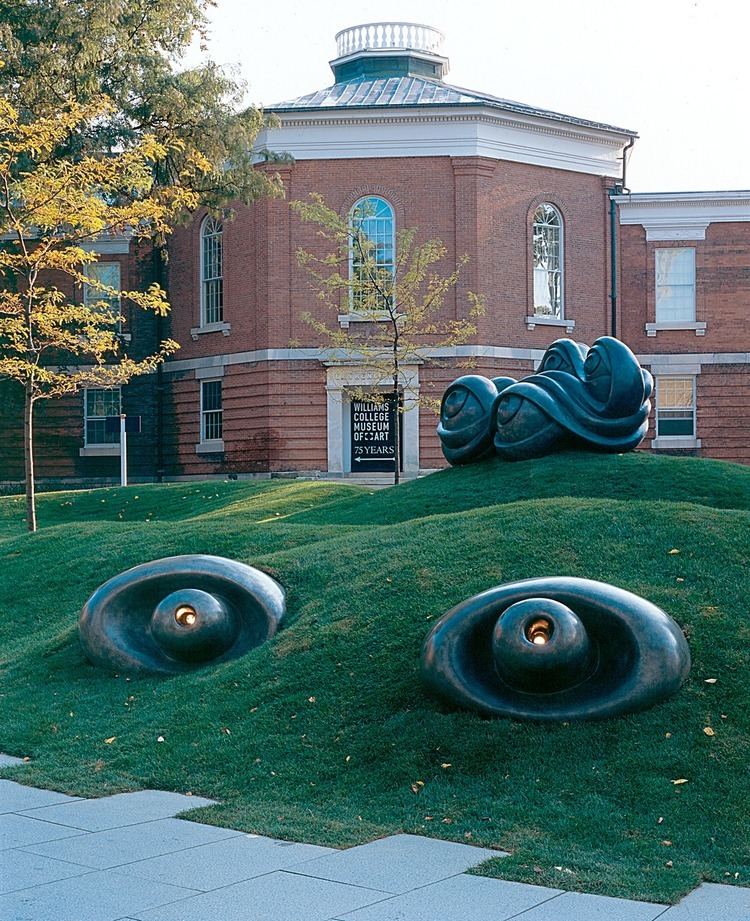Established 1926 Collection size 14,000 Phone +1 413-597-2429 | Type Art museum Director Christina Olsen | |
 | ||
Collections Contemporary art, photography, prints, Indian painting Address 15 Lawrence Hall Dr #2, Williamstown, MA 01267, USA Hours Open today · 10AM–5PMMonday10AM–5PMTuesday10AM–5PMWednesdayClosedThursday10AM–8PMFriday10AM–5PMSaturday10AM–5PMSunday10AM–5PMSuggest an edit Artwork Trees and Barns: Bermuda, Seascape Similar Sterling and Francine, Massachusetts Museum of Contemp, The Berkshires, Taconic Golf Club, Norman Rockwell Museum Profiles | ||
Williams college museum of art claudia rankine reading
The Williams College Museum of Art (WCMA) is a college art museum in Williamstown, Massachusetts. Situated at the Williams College campus close to Massachusetts Museum of Contemporary Art (MASS MoCA) and the Clark Art Institute. Its growing collection encompasses more than 14,000 works, with particular strengths in contemporary art, photography, prints, and Indian painting. The museum is free and open to the public.
Contents
- Williams college museum of art claudia rankine reading
- Williams college museum of art musical garlands ragamala
- History
- Collection
- Notable Artworks
- Fulkerson Fund for Leadership in the Arts
- Monuments Men
- Williams Art Mafia
- Major past exhibitions
- References
Williams college museum of art musical garlands ragamala
History
WCMA was established in 1926 by Karl Weston, an art history professor who made it his mission to provide students a venue for firsthand experience of art. The College's art collection, in large part donated by Eliza Peters Field in 1897, had been housed in two small wings of what was then the College library, Lawrence Hall, designed by Thomas A. Tefft in 1846. When the library was moved to Stetson Hall in 1920, however, Weston transformed the octagonal brick building into an art museum, adding a T-shaped wing in order to provide additional space for galleries and the College's rapidly expanding art history curriculum.
Over the next half-century, under a series of directors, the College enlarged the art department and the museum's collection. In 1981, Director Franklin W. Robinson hired Charles Moore to redesign the building in order to raise facilities to professional standards and double exhibition space. This coincided with an expansion of WCMA's staff, educational programs, and exhibition schedule.
Accredited by the American Alliance of Museums in 1993 and re-accredited in 2004, the museum has been the site of dozens of exhibitions (see Past Exhibitions, below). In 2012, WCMA hired its current director, Christina Olsen.
Collection
Made up of 14,000 individual works, the collection has particular strengths in ancient Egyptian, Assyrian, and Greco-Roman objects, Indian Painting, African Sculpture, photography, art of the U.S., and international modern and contemporary art. The museum is also home to the world's largest assembly of works by the artist brothers Maurice Prendergast and Charles Prendergast. These works were donated in 1983 by Charles's widow Eugenie Prendergast, and were the basis for WCMA's Prendergast Archive and Study Center, which is maintained as a center for scholarship on the brothers and their contemporaries.
Marking its 75th anniversary in 2001, the museum installed Eyes (Nine Elements) by Louise Bourgeois. This outdoor sculpture has since become a symbol of the museum's dedication to contemporary art, as well as an iconic part of the Williams campus.
Notable Artworks
Fulkerson Fund for Leadership in the Arts
Established by Allan W. Fulkerson '54, the Fund is now in its fifth year and continues to support a variety of student-centered projects at WCMA. Central components include:
Monuments Men
During World War Two, a body of nearly 350 servicemen and women was established to recover and protect artwork from areas affected by the conflict. This organization was known as the Monuments, Fine Arts, and Archives program (MFAA), or more colloquially, the Monuments Men. Among the ranks of this enterprise were Williams graduates Charles Parkhurst '35 and Lane Faison '29, who both returned to WCMA to serve as museum directors after the war. In February 2014, Sony Pictures released The Monuments Men a feature film directed by George Clooney that has revived interest in these lesser-known heroes of the war. On March 7, 2014, WCMA celebrated its own two Monuments Men by inviting Faison's sons and Parkhurst's widow to speak at the museum.
Williams Art Mafia
This informal group studied under the trio of Lane Faison, Bill Pierson and Whitney Stoddard, and became collectively known as the Williams Art Mafia. Its members include:
Today, Williams art students graduate ready to take on a broad variety of leadership, creative, and education roles within the art world.
